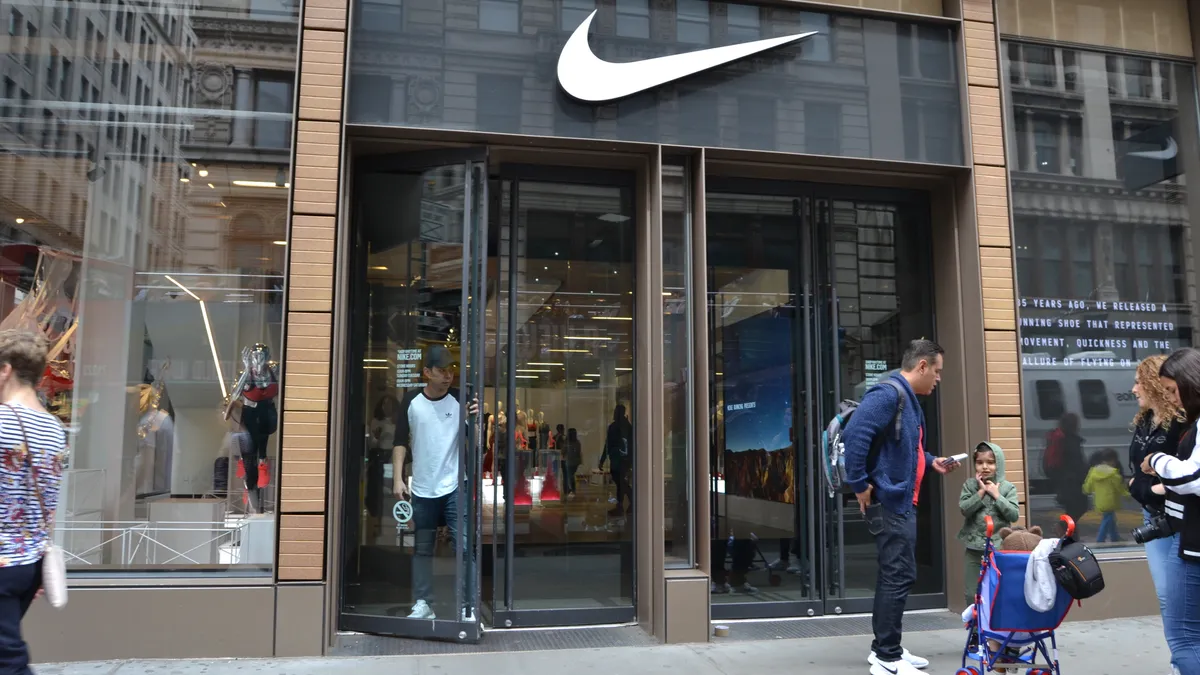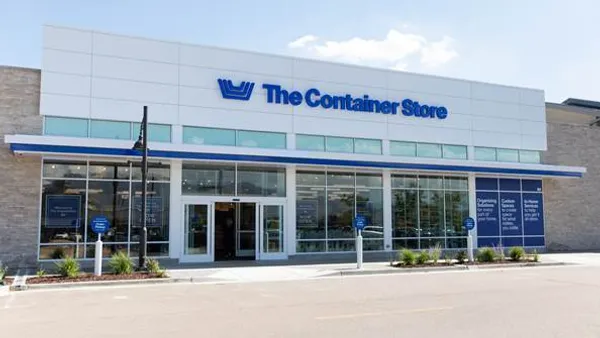Dive Brief:
- Nike sales spiked 16% year over year to $12.2 billion in its most recent fiscal quarter, with direct sales up 28% to $4.7 billion.
- The company's digital sales increased by nearly 30%. Profits at the sportswear brand were up too, with net income rising 23% from the same period last year.
- However, executives significantly tempered their expectations for the full fiscal year ahead because of supply chain disruptions, including COVID-19-related factory shutdowns in Vietnam and Indonesia.
Dive Insight:
Nike Chief Financial Officer Matt Friend told analysts on a conference call Thursday that financial results for the company's first quarter (which ended Aug. 31) would have been better if not for supply chain congestion, according to a Seeking Alpha transcript.
Factory shutdowns have been particularly painful for Nike. Footwear factories in Vietnam remain closed by government mandate as the country tries to control COVID-19 outbreaks. Nike has already lost 10 weeks of production in Vietnam since mid-July, Friend said, and doesn't expect phased reopenings to begin until October.
The company has also been hurt by the widespread log jams at ports, sharp spikes in ocean freight costs and increased air freight spending as Nike tries to leapfrog capacity shortages on container ships. "Lost weeks of production, combined with longer transit times, will lead to short-term inventory shortages in the marketplace for the next few quarters," Friend said.
Given all those headaches, the company reduced revenue estimates for the fiscal year from double-digit growth to mid-single-digit growth.
While relatively strong at 16% growth, Nike's Q1 revenue came short of Wall Street estimates, according to Credit Suisse analysts led by Michael Binetti, who described demand for Nike's goods as "enviable" but overwhelmed by supply chain pressures. The analysts also said in a research note that they don't expect Nike executives to have to revise their outlook again going forward.
Not everyone agrees. BTIG analysts Camilo Lyon and Mackenzie Boydston said in a note that Nike's guidance could "prove too optimistic" given that factories in Vietnam still haven't opened and would take time to return to capacity once they do.
"In addition, worsening bottlenecks throughout the supply chain (port congestion, container shortages, limited ocean and air availability) have doubled shipping transit times to 80 days further exacerbating an already poor supply situation," the analysts wrote.
The downer news on the brand's supply chain overshadowed bright spots elsewhere in the company's business. Its margins expanded by 170 basis points during the quarter thanks in large part to Nike's pivot to its more profitable direct-to-consumer business.
The company's North American business showed strength overall as well, with total revenue up 15%. Broken down, footwear in North America was up 10% year over year, apparel up 27% and equipment up 29%. Friend said that excitement around the Olympics, WNBA season and NBA finals helped power retail sales of Nike's performance business, which grew by double digits.













